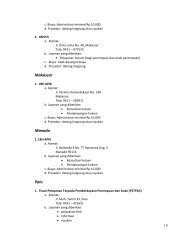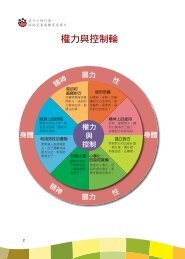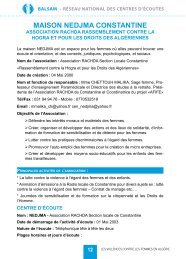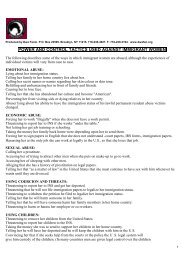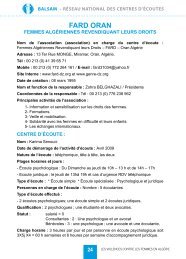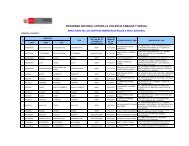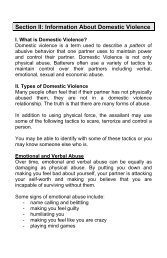Working with Battered Women: a Handbook for ... - Hot Peach Pages
Working with Battered Women: a Handbook for ... - Hot Peach Pages
Working with Battered Women: a Handbook for ... - Hot Peach Pages
Create successful ePaper yourself
Turn your PDF publications into a flip-book with our unique Google optimized e-Paper software.
DOMESTIC VIOLENCE AND HEALTH CARE PROFESSIONALSDomestic violence is one of the most common causes of injury to women. It accounts <strong>for</strong> moreinjuries to women than automobile accidents, stranger assaults and sexual assaults combined. It isexperienced by 25% of Canadian women at some time in their lives—women from all culturalgroups, all ages and all economic classes. It is especially likely during pregnancy—21% of womenwho are abused report being physically and/or sexually assaulted during pregnancy—40% ofwomen who are assaulted during their pregnancy report that the assault began during pregnancy.Almost half of all wife assault results in physical injury to the woman—physical injuries suchas bruising, cuts, scratches, burns and broken bones. And 4 in 10 women who are injured by apartner seek medical attention. That means they are going to physicians.Yet studies show that physicians have been unlikely in the past to identify and respond towomen as victims of wife assault. Why? Health care professionals give the following reasons <strong>for</strong>not asking patients about their experiences <strong>with</strong> domestic violence:• they’re afraid of offending the patient;• they aren’t sure how to approach the patient about the subject;• they believe they are powerless to make changes since the woman is likely to remain in theabusive relationship despite intervention; and• they believe the low prevalence of domestic violence does not warrant the time it wouldtake to raise and deal <strong>with</strong> the issue.But health care professionals can play a major role in assisting abused women. Once they areeducated about the issue of wife abuse and the possible indicators:• they’ll be in a better position to understand the motivations and actions of their patients;• they’ll better be able to identify a woman has been abused by her partner;• they’ll be better able to approach a woman about the subject of wife abuse; and• if a woman discloses abuse, knowing what her immediate needs are and how to refer her tocommunity agencies that offer crisis and long term support will make a significantdifference to her.It’s not the job of the health care professional to rescue an abused woman. You cannotmake her disclose abuse nor can you make her leave her abusive husband. What you can offer heris the understanding, support and in<strong>for</strong>mation that will allow her to make her own in<strong>for</strong>med choiceswhen she is ready to do so.Of course, one of the greatest frustrations experienced by all professionals is the inability tohave a direct impact on an abused women's decision to leave an abusive partner. This frustration isnormal, and is experienced by all who try to assist: social workers, police officers, lawyers, doctors,nurses, and shelter workers. Knowing about the dynamics of domestic violence against womencan go a long way in reducing this frustration.1



